Trees Birds Mammals Fish Amphibians Reptiles
Wild Algarve
Bookshop
Hygrophoropsis rufa (D.A. Reid) Knudsen
Phylum: Basidiomycota - Class: Agaricomycetes - Order: Boletales - Family: Hygrophoropsidaceae
Distribution - Taxonomic History - Etymology - Identification - Culinary Notes - Reference Sources
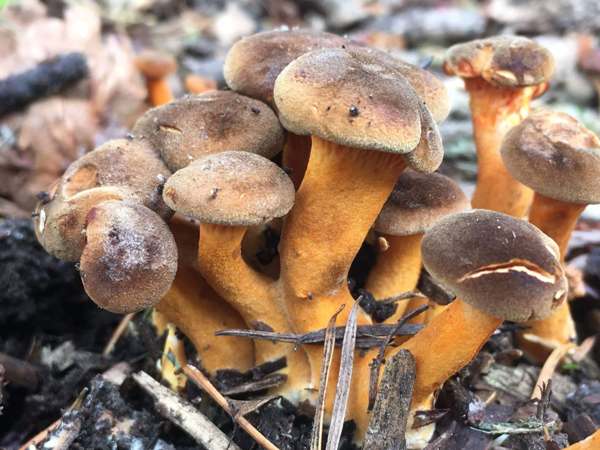
Hygrophoropsis rufa, a gilled boletoid
fungus, was until recently considered merely a variety of the False Chanterelle Hygrophoropsis aurantiaca; however, recent DNA studies have shown that is a distinct species.
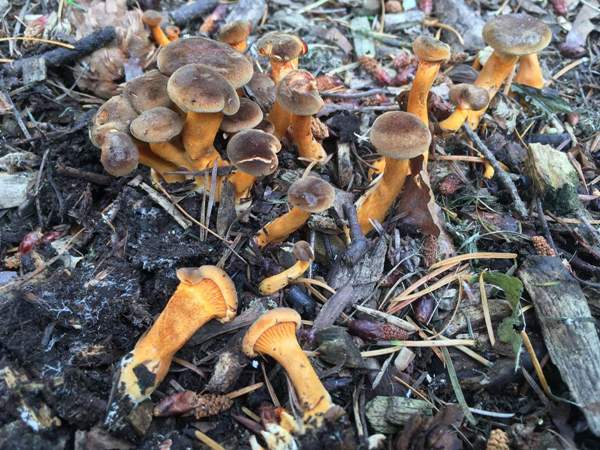
Distribution
Although infrequently recorded in Britain and Ireland, this species may be more common than records suggest since it is easily confused with Hygrophoropsis aurantiaca.
Taxonomic history
When in 1972 British mycologist Derek Agutter Reid (1927 - 2006) described this mushroom he gave it the scientific name Hygrophoropsis aurantiaca var. rufa. Its currently-accepted scientific name Hygrophoropsis rufa dates from a 2008 publication (see Reference Sources, below) by Danish mycologist Henning Knudsen.
Hygrophoropsis is a sparsely populated genus, with just five species currently recorded from Britain.
Etymology
The genus name Hygrophoropsis means
resembling Hygrophorus. (The suffix -opsis comes from Greek and means 'similar to'.) In shape it is true that woodwaxes (Hygrophorus species) and Hygrophoropsis rufa are somewhat similar, but woodwaxes have broad gills which are, as the name suggests, waxy. If you are unfamiliar with woodwaxes, Hygrophoropsis hypothejus, commonly called the Herald of Winter, is a typical example. The specific epithet rufa is a reference to the orange-brown colouring of the cap of Hygrophoropsis rufa.
Identification guide
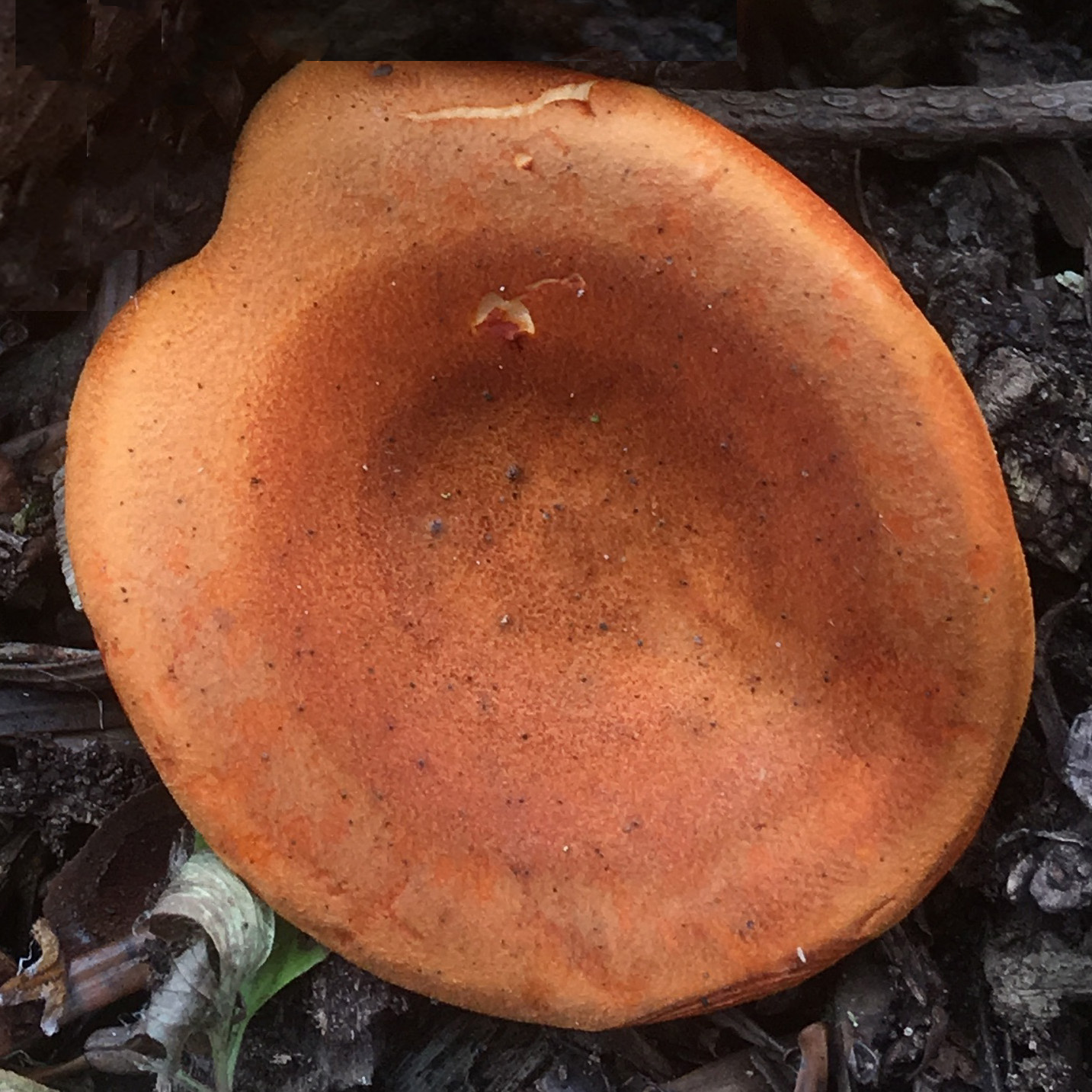 |
Cap
Cap diameter 3-10cm. Initially convex, caps usually expand to become shallow funnels but occasional specimens remain slightly domed or simply flat when fully mature; surface dry, matt to finely or granularly tomentose. Cap colour orange-brown to dark brown. The cap margin remains slightly inrolled and is often wavy and irregular. |
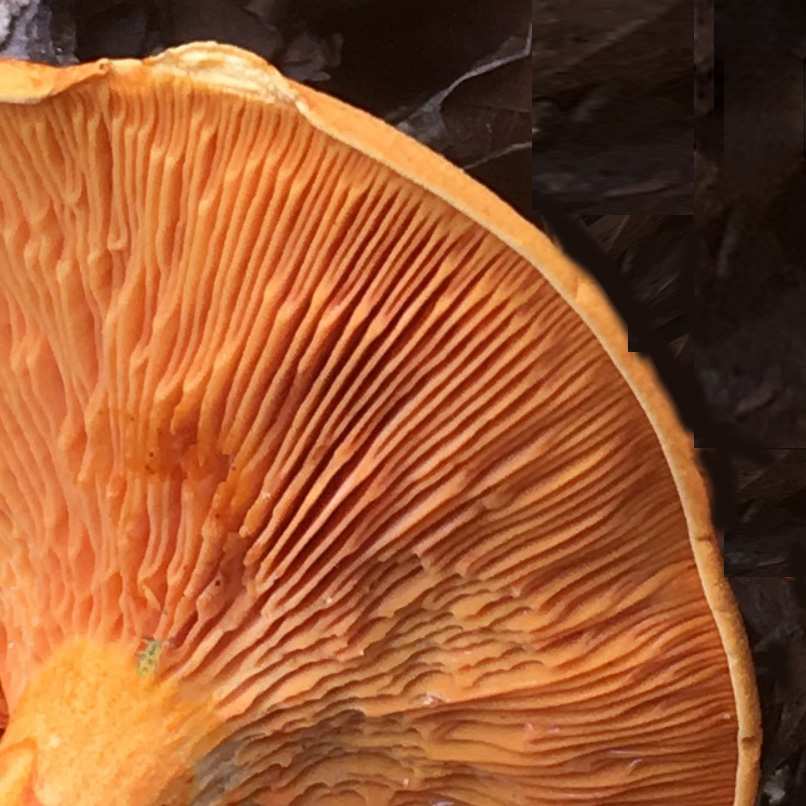 |
Gills
Bright orange when young and fresh, becoming yellower when old,
the repeatedly-forking gill-like spore-producing structures are deeply decurrent and narrow. |
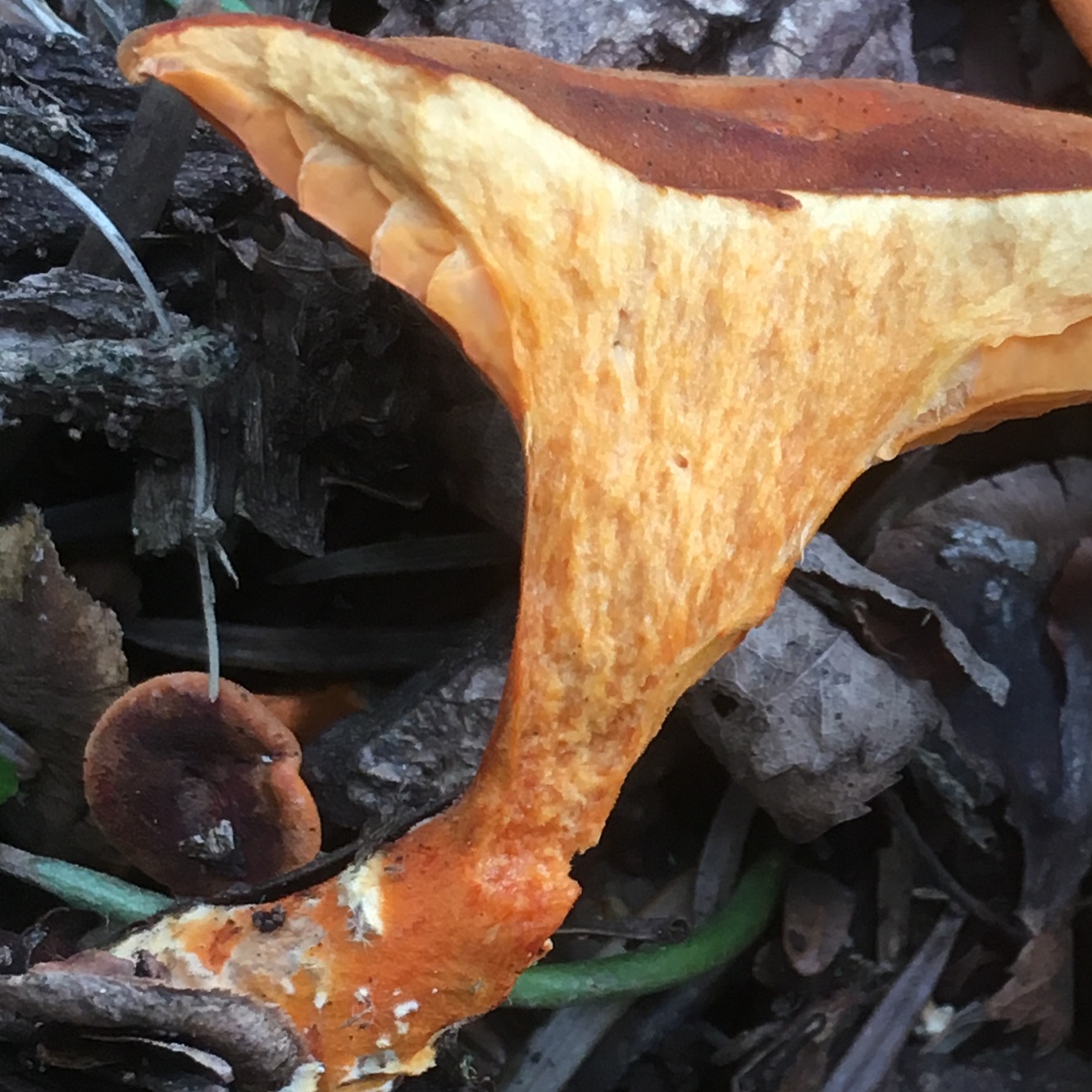 |
Stem
Typically 3 to 5cm tall and 5 to 10mm in diameter, upper parts of the tough stems of Hygrophoropsis rufa are the same
colour as the cap, while the stem base is white tomentose. The fibrous flesh is orange buff. |
| |
Spores
Ellipsoidal to ovoid, smooth, thick-walled, 5.6-6.4 x 3.6-4.4μm; dextrinoid.
Spore print
White. |
Odour/taste |
Mildly mushroomy but not distinctive. |
Habitat & Ecological role |
Saprobic, most often found beside conifer stumps and on conifer woodchip and occasionally sawdust. |
Season |
August to November in Britain and Ireland. |
Similar species |
Hygrophoropsis aurantiaca has a paler yellow-orange cap and significantly larger thin-walled spores.
Cantharellus
cibarius, a popular edible species found in similar woodland habitats, has wrinkled veins rather
than gills. |
Culinary Notes
Hygrophoropsis rufa is a rarely recorded species whose edibility is unknown to us.
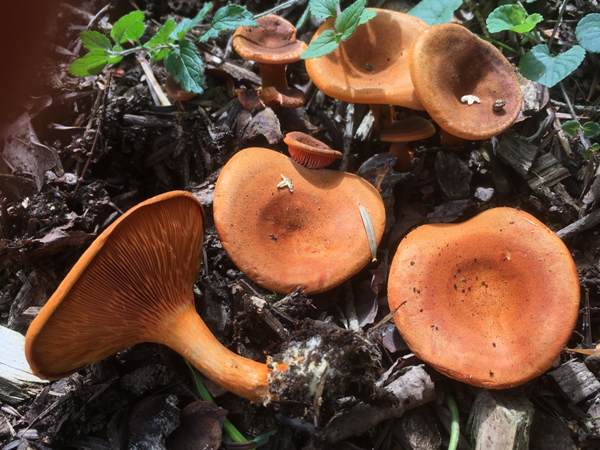
Reference Sources
Fascinated by Fungi, 2nd Edition, Pat O'Reilly 2016, reprinted by Coch-y-bonddu Books in 2022.
Hygrophoropsis rufa (D.A. Reid) Knudsen, in Knudsen & Vesterholt, Funga Nordica, Agaricoid, Boletoid and Cyphelloid Genera (Gylling): 913 (2008)
Dictionary of the Fungi; Paul M. Kirk, Paul F. Cannon, David W. Minter and J. A. Stalpers; CABI, 2008
Taxonomic history and synonym information on these pages is drawn from many sources but in particular from the British Mycological Society's GB Checklist of Fungi.
Acknowledgements
This page includes pictures kindly contributed by Simon Harding.
Top of page...
Fascinated by Fungi. Back by popular demand, Pat O'Reilly's best-selling 450-page hardback book is available now. The latest second edition was republished with a sparkling new cover design in September 2022 by Coch-y-Bonddu Books. Full details and copies are available from the publisher's online bookshop...